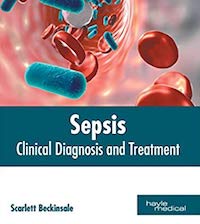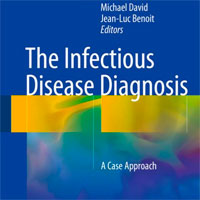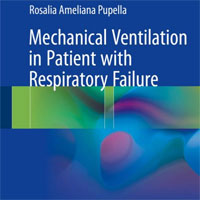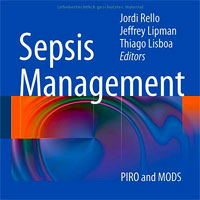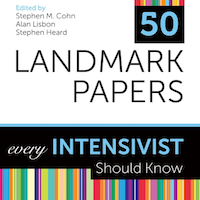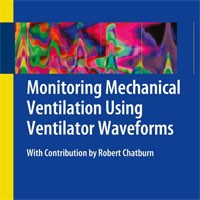Tag: ventilation
Awake Veno-Venous ECMO in ICU
Extracorporeal membrane oxygenation (ECMO) is an advanced treatment for severe respiratory failure. Implantation of ECMO before invasive ventilation or extubation during ECMO has been reported and is becoming increasingly... read more
Rediscovery of Acute Lung Injury in Cardiac Arrest
Systemic multi-organ injury following resuscitation from sudden cardiac arrest (CA) has long been recognized. First termed 'post-resuscitation disease' in the 1980's this systemic injury was more appropriately re-named post-CA... read more
RSV Outbreak in a Pediatric ICU
The Royal Liverpool Children's Hospital—Alder Hey pediatric intensive care unit (PICU) usually has a low rate of nosocomial respiratory syncytial virus (RSV) infection. We report and analyze a major outbreak of nosocomial... read more
Health Communication and Adherence to Noninvasive Ventilation in CHRF
This study demonstrated the positive effect of a behavioral strategy based on the IMB model in improving noninvasive ventilation (NIV) adherence in patients with chronic hypercapnic respiratory failure (CHRF). The extended... read more
The ICU Survival Book
The ICU Survival Book is a guide for residents, students, advanced practice providers, and critical care nurses who want to learn the basics of critical care medicine. This reference is designed to follow the systems-based... read more
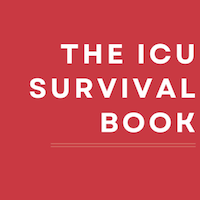
Intubating the Critically Ill Patient: A Step-by-Step Guide for Success in the ED and ICU
Intubating critically ill patients is a process that requires a well-thought-out, step-by-step plan, specific to each patient. This book teaches the steps necessary to predict, prepare, perform, and provide pre and post-intubation... read more

Intubate Patients with Sepsis Before Midnight or When the Time Comes?
The ever-recurring decision for every clinician is to act or not to act and when to act. The balance of benefit or harm of an intervention and the optimal timing of treatment is not always clear. Intervening or not and... read more
New Insights on CRRT for ARDS
In recent times, the applications of continuous renal replacement therapy (CRRT) beyond kidney‐related conditions have been progressively increasing, and its implementation in randomized controlled trials (RCTs) specifically... read more
Textbook of Ventilation, Fluids, Electrolytes and Blood Gases
The Textbook of Ventilation, Fluids, Electrolytes and Blood Gases encompass essential topics for which thorough education and training is a must for any clinician who manages these patients. This book has four sections, each... read more
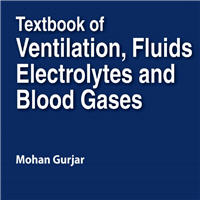
Mechanical Ventilator-Associated Pneumonia in the COVID-19 Pandemic Era
The most common pathogens isolated in our ventilator-vssociated pneumonia (VAP) patients were Acinetobacter spp., Pseudomonas aeruginosa, Klebsiella pneumoniae, and Staphylococcus aureus. Resistance to the major classes... read more
Ventilator-associated Lung Disease: A Complex Reality in the ICU
Mechanical ventilation, by tracheal intubation or tracheostomy, is the common supplementary treatment for several reasons for hospitalization. Since the advent of long-term mechanical ventilation during the polio epidemic. In... read more
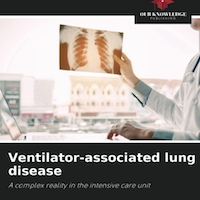
Invasive Mechanical Ventilation Strategies For ICU Patients with COVID-19
Lung protective ventilation and prone positioning were used in many of the Danish ICU patients with COVID-19, but barotrauma, prolonged ventilation and death occurred frequently. A total of 774 patients were invasively... read more
ECMO. Extracorporeal Membrane Oxygenation
Extracorporeal membrane oxygenation (ECMO), is a rapidly developing technology for supporting or even replacing heart and/or lung functions for days or weeks, giving the time for recovery, other therapeutic interventions... read more
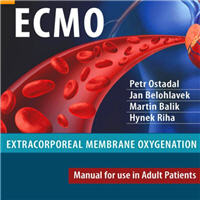
Toward Precision Medicine in ARF
Acute hypoxemic respiratory failure (AHRF) is one of the leading causes A for admission to the ICU. Acute respiratory failure (ARF) is defined as the inability of the respiratory system to meet the oxygenation and ventilation... read more
Mechanical Ventilation in the ICU: A New Approach and Treatment
In the present book, a broad description of the processes carried out in patients with mechanical ventilation in the ICU is made. It covers from an overview of mechanical ventilation and some of its history to the processes... read more

Extubation Failure Risk Prediction Model Using Bedside Ultrasound
We have established a risk prediction model for extubation failure in mechanically ventilated ICU patients. This risk model base on bedside ultrasound parameters provides valuable insights for identifying high-risk patients... read more
72‐h Infusion of Prostacyclin in Mechanically Ventilated Patients with Pulmonary Infection and Endotheliopathy
Acute respiratory failure (ARF) is common in critically ill patients, and 50% of patients in intensive care units require mechanical ventilation. The COVID‐19 pandemic revealed that COVID‐19 infection induced ARF... read more
Multidisciplinary Collaborative Bundled Care Improves Outcomes in ICU Patients with Endotracheal Intubation
Multidisciplinary analgesic and sedative bundled care has demonstrated the potential to decrease restraint use in patients undergoing endotracheal intubation and mechanical ventilation, reduce the need for analgesic and sedative... read more
Misunderstanding Buffering in Critical Illness
It is was disappointing to read the recent review in Intensive Care Medicine on buffering in metabolic acidosis. I consider this a "pre-Copernican" approach to acid–base that does not respect basic physical–chemical principles. The... read more
Prediction of Prolonged Mechanical Ventilation in the ICU via Machine Learning
Early recognition of risk factors for prolonged mechanical ventilation (PMV) could allow for early clinical interventions, prevention of secondary complications such as nosocomial infections, and effective triage of hospital... read more
Mechanical Ventilation Timing in Sepsis
A recent study by Dr. Kim and colleagues examined the association between the timing of mechanical ventilation (MV) and clinical outcomes in ICU patients with sepsis. The study included 2440 adult sepsis patients from... read more
Early Tracheostomy in Ventilated COVID-19 Patients Reduces VAP Incidence
Tracheostomy can reduce mechanical ventilation (MV) duration, ICU and hospital length of stay (LOS), and ventilator-associated pneumonia (VAP) risk in critically ill patients. The timing of tracheostomy in COVID-19 patients... read more


